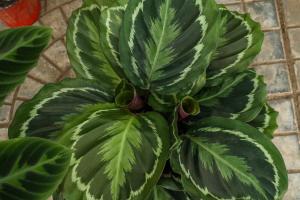Can Potted Plants be the Source of Gnats?
Gnats can be a problematic pest in any home. These tiny flying insects can quickly reproduce and infest your living space, causing annoyance and even potential health hazards. One potential source of gnats is potted plants. In this article, we will explore whether or not potted plants can indeed be the source of gnats, and what you can do to prevent and eliminate any infestations.
How do Gnats get into Potted Plants?
Gnats can enter potted plants in a number of ways. One common way is through the soil. Female gnats lay their eggs in moist soil, and when the eggs hatch, the larvae feed on the organic matter in the soil. The larvae then pupate and eventually emerge as adult gnats. Another way gnats can enter potted plants is through cracks or holes in the pot. This can happen during outdoor gardening or when purchasing a plant from a store or nursery that already has gnats present.
Identifying a Gnat Infestation in Potted Plants
If you suspect that your potted plants are the source of a gnat infestation, there are a few signs you can look out for. One of the most obvious signs is the presence of flying gnats around the plant or in the surrounding area. You may also notice small, worm-like larvae in the soil or on the surface of the plant. Additionally, if you see yellowing leaves, wilting, or other signs of plant stress, this could be a sign that the gnats are causing damage to the roots.
Preventing Gnats in Potted Plants
The best way to prevent a gnat infestation in your potted plants is to ensure that the soil stays as dry as possible. Gnats thrive in moist conditions, so avoiding overwatering your plants is crucial. You can also try adding a layer of sand or gravel to the top of the soil to deter gnats from laying their eggs. Additionally, make sure to inspect any new plants you bring into your home for signs of gnats or other pests.
Eliminating Gnats in Potted Plants
If you already have a gnat infestation in your potted plants, there are a few steps you can take to eliminate them. One effective method is to use a soil drench treatment that contains Bacillus thuringiensis, a natural insecticide that specifically targets gnat larvae. Another option is to use sticky traps, which can be placed near the plant to catch adult gnats. You can also try changing the soil in the pot or repotting the plant entirely to remove any larvae or pupae present.
Conclusion
In summary, potted plants can indeed be a source of gnats, as the moist soil provides an ideal breeding ground for these pests. However, by taking preventative measures and monitoring your plants for any signs of infestation, you can effectively eliminate gnats and keep your home free from these annoying insects.

 how many times do yo...
how many times do yo... how many planted tre...
how many planted tre... how many pine trees ...
how many pine trees ... how many pecan trees...
how many pecan trees... how many plants comp...
how many plants comp... how many plants can ...
how many plants can ... how many plants and ...
how many plants and ... how many pepper plan...
how many pepper plan...































